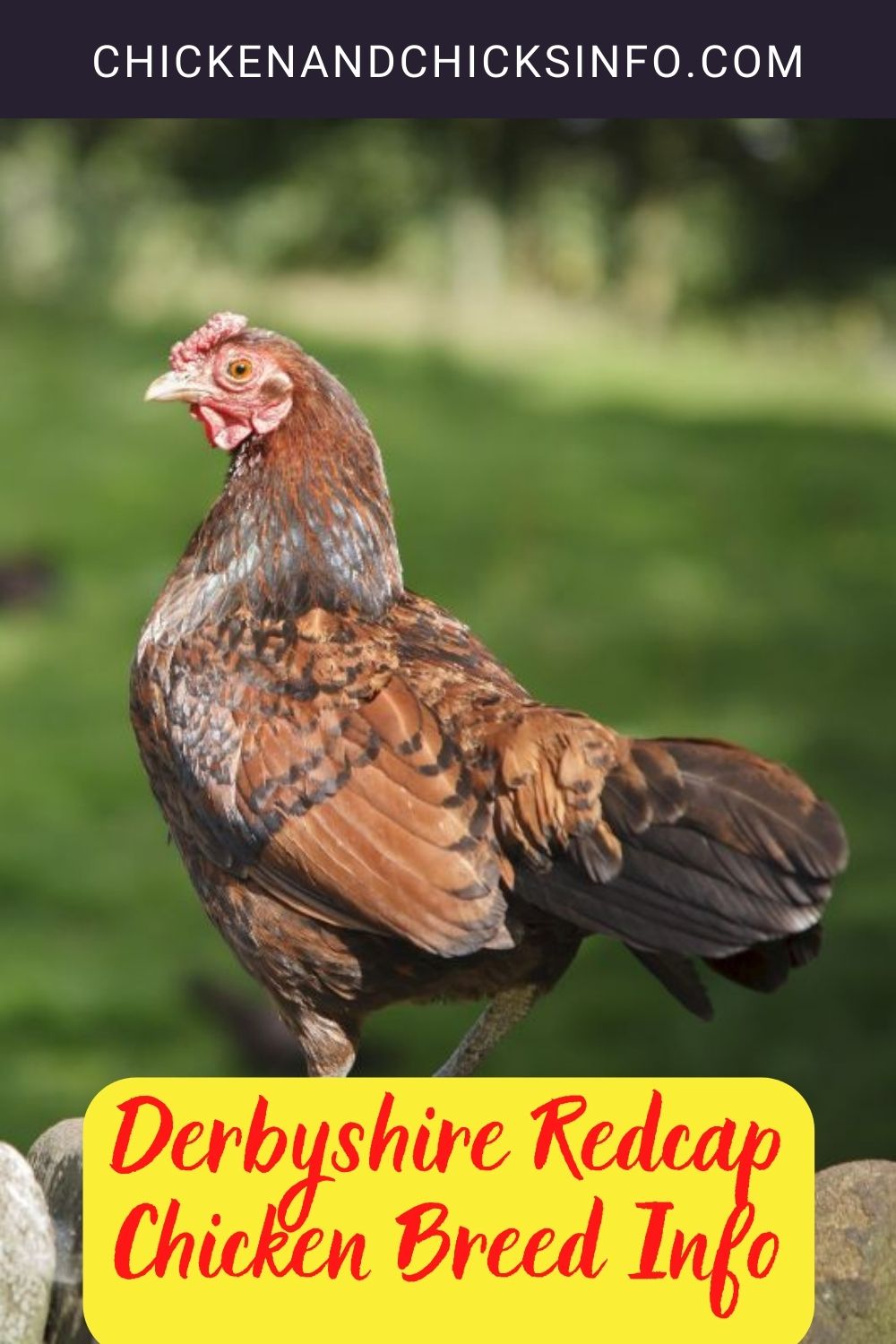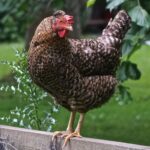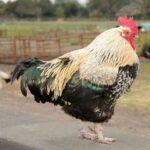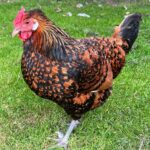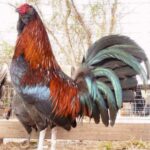The Derbyshire Redcap breed is the most critically rare breed in the United States. Hens are average layers of tinted, cream-colored eggs and are not likely to become broody.
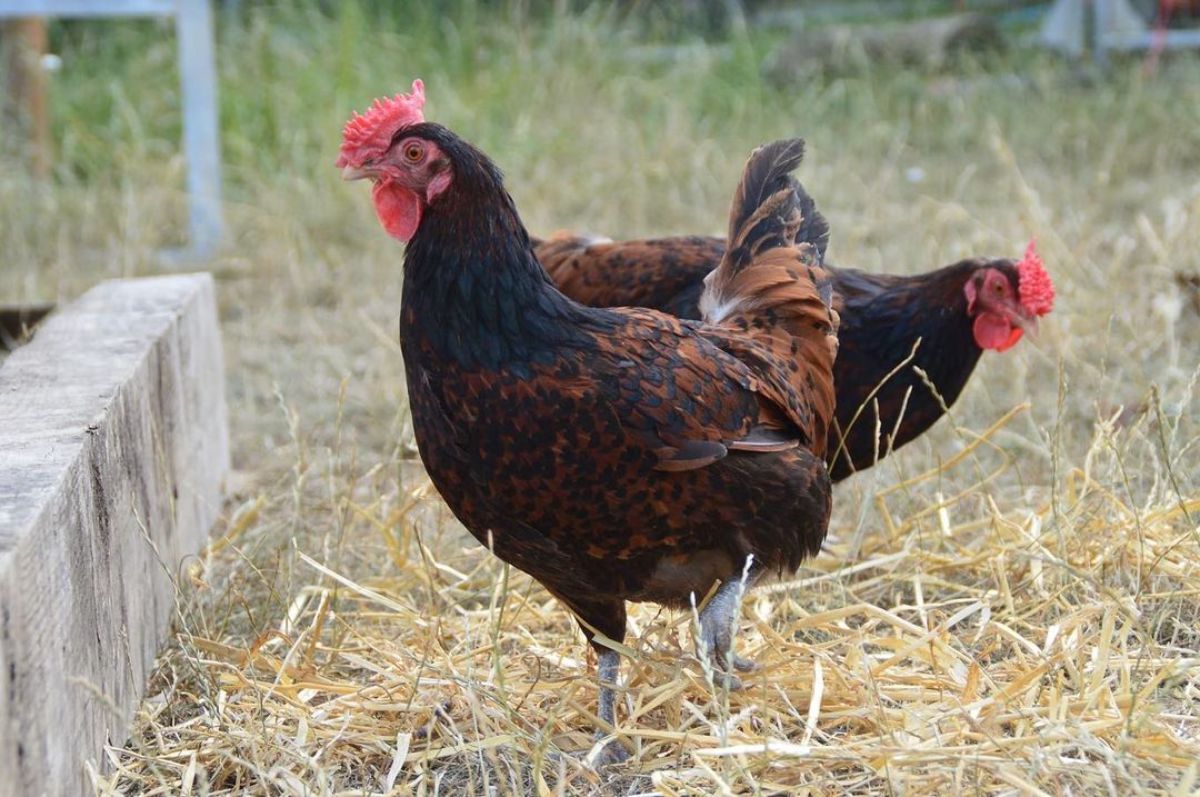
They are not used for meat production, as their meat is considered to be poor in quality.
One perk of keeping Derbyshire Redcap hens is that hens will lay for a long time, well past when other breeds stop laying.
Jump to:

Derbyshire Redcap Chicken Breed Quick Info
Derbyshire Redcap Chicken Description
| Derbyshire Redcap Type/Size: | Standard |
| Feather Color: | Reddish-brown |
| Leg Type: | Clean |
| Leg Color: | Blue |
| Skin Color: | White |
| Derbyshire Redcap Ease of Raising/Keeping: | Easy |
| Derbyshire Redcap Special Care Needs: | No |
| Is the Derbyshire Redcap breed a common, rare, or protected breed of chicken? | Rare, “critical” status |
Derbyshire Redcap Use
| Meat | No |
| Eggs | Yes |
| Dual Purpose | No |
| Derbyshire Redcap Temperament: | Active, alert |
| Derbyshire Redcap Ability/Likelihood to Free Range: | Yes |
Derbyshire Redcap Egg Production
| Egg Color | White |
| Egg Size | Medium |
| Estimated Number of Eggs Per Year | 150-200 |
| Likeliness to Brood Eggs/Raise Chicks | Low |
Derbyshire Redcap Meat Production
| Dressed Weight Male | N/A |
| Dressed Weight Female | N/A |
Derbyshire Redcap Climate Tolerance
| Heat | Good |
| Cold | Moderate |
Derbyshire Redcap Age to Maturity
| Number of Months to Reach Full Size | 5 Months |
| Number of Months to Start Egg Laying | 5 Months |
| Number of Weeks/Months to Reach Meat Harvest Size | N/A |
Derbyshire Redcap Size at Maturity
| Male | 8 ½ lbs. |
| Female | 6 ½ lbs. |
Origins of the Derbyshire Redcap Chicken
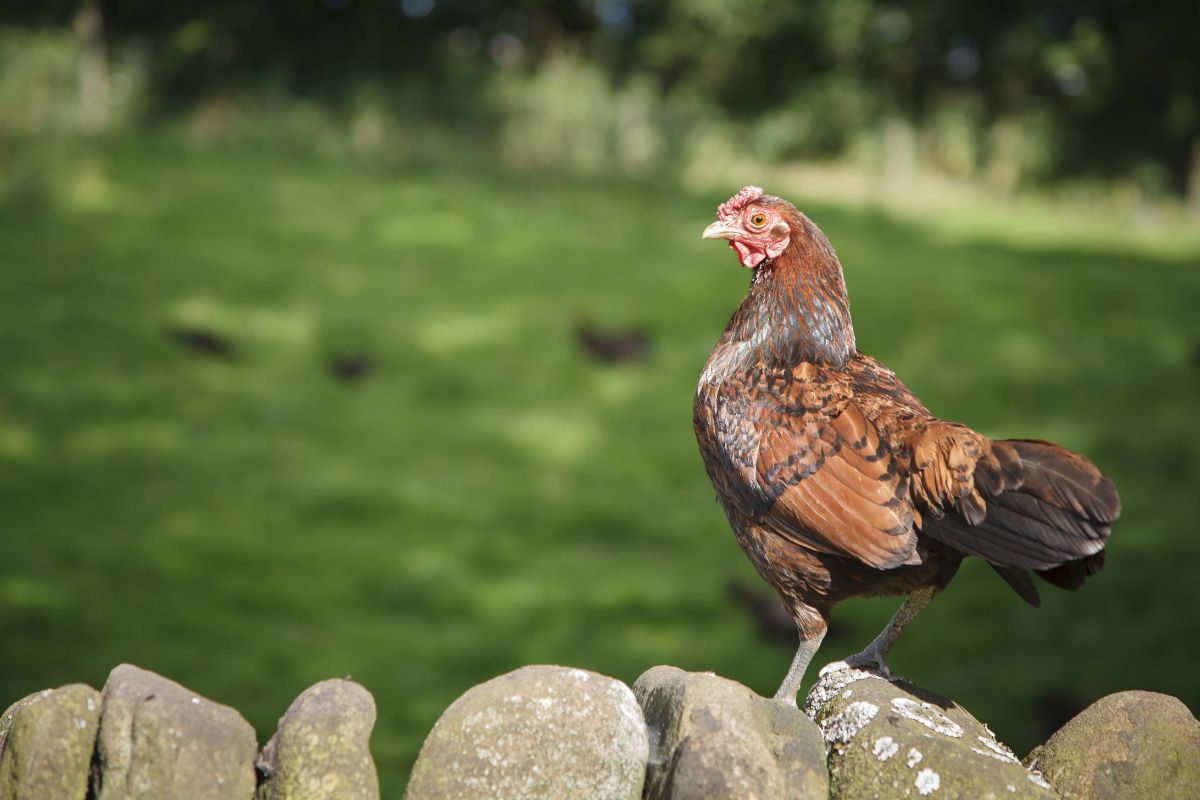
The Derbyshire Redcap chicken breed originated in the Derbyshire region of England. During the 19th century, they were very popular on British farms, especially for egg production. At that time, they were used for meat production as well.
By 1900, they had fallen out of popularity and become almost extinct. A few decades earlier, they had been imported to the United States.
Today, it is still extremely rare, but there are several breeders and groups fighting to keep the breed from going extinct.
Some Things to Know About the Derbyshire Redcap Chicken

The Derbyshire Redcap chicken breed is named after its large red comb. Their rose comb resemble a red cap sitting on top of their head.
This breed is on the smaller side. You’ll notice that hens are a reddish-brown color with black spangles, while roosters are a reddish-brown with lighter hackles and a beautiful iridescent black tail.
How Easy is it to Keep Derbyshire Redcap Chickens?
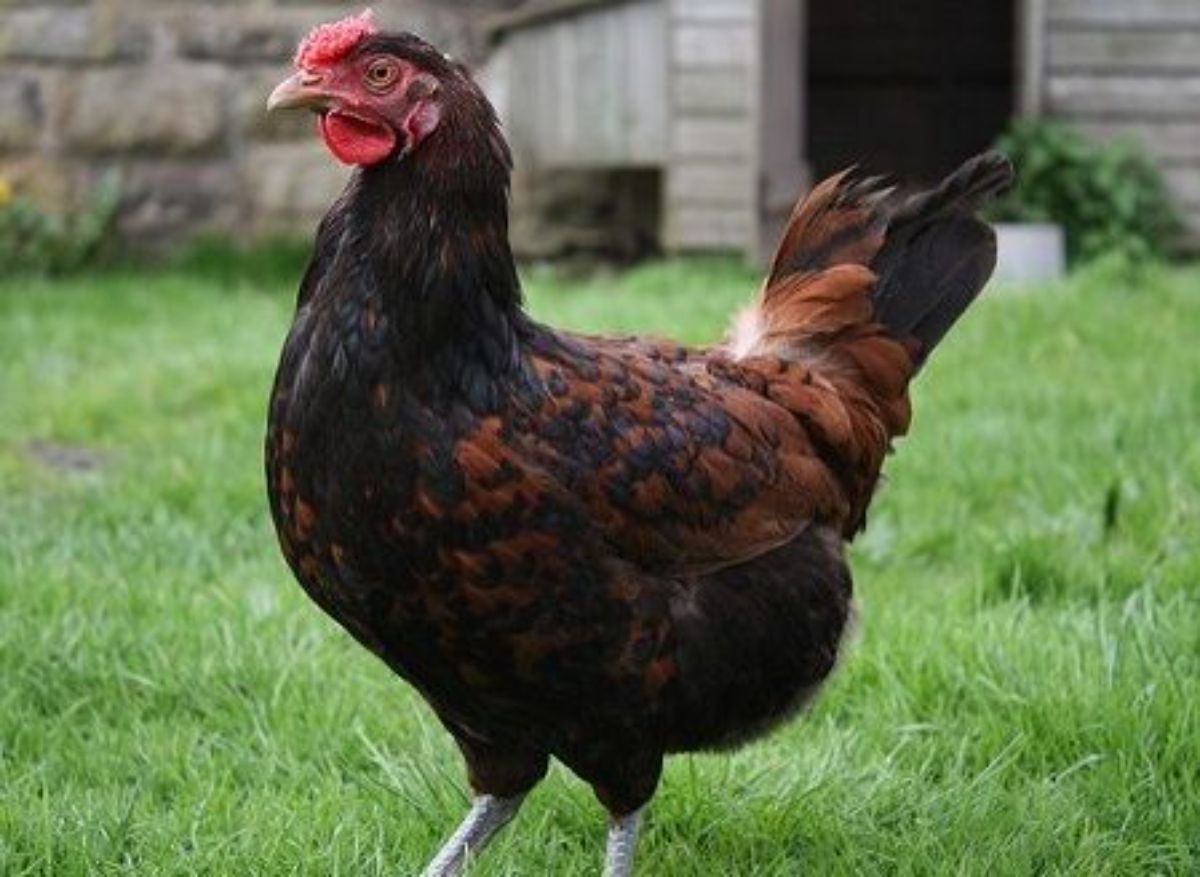
These chickens were developed in the mossy, foliage-filled hills of Derbyshire, England. This makes them excellent foragers and ideal free-range chickens.
They are alert and active, making them predator-savvy. Their coloring aids in camouflaging them from potential aerial predators.
When it comes to personality, these birds are not at all cuddly pet chickens. They prefer to be left alone and tend to avoid human contact.
They do well in hot weather (as long as you provide them with shade and plenty of fresh water), but do not do so well in the cold. This is mainly due to their large rose comb, which can become frostbitten fairly easily.
Special Care and Considerations for Derbyshire Redcap Chickens
As with all birds with a large rose comb, frostbite can be an issue. When the temperature drops, you can help to protect their comb with a bit of vaseline.
